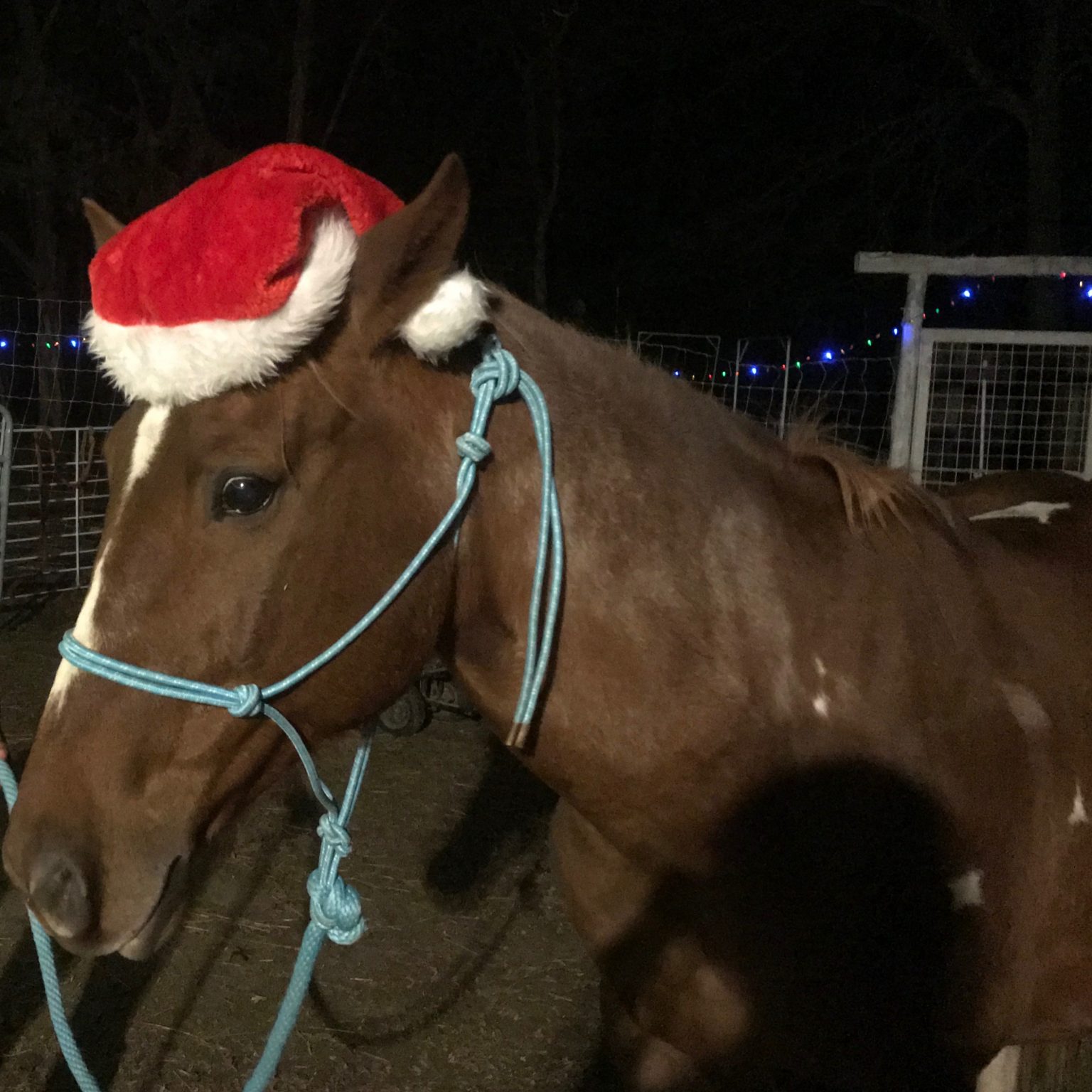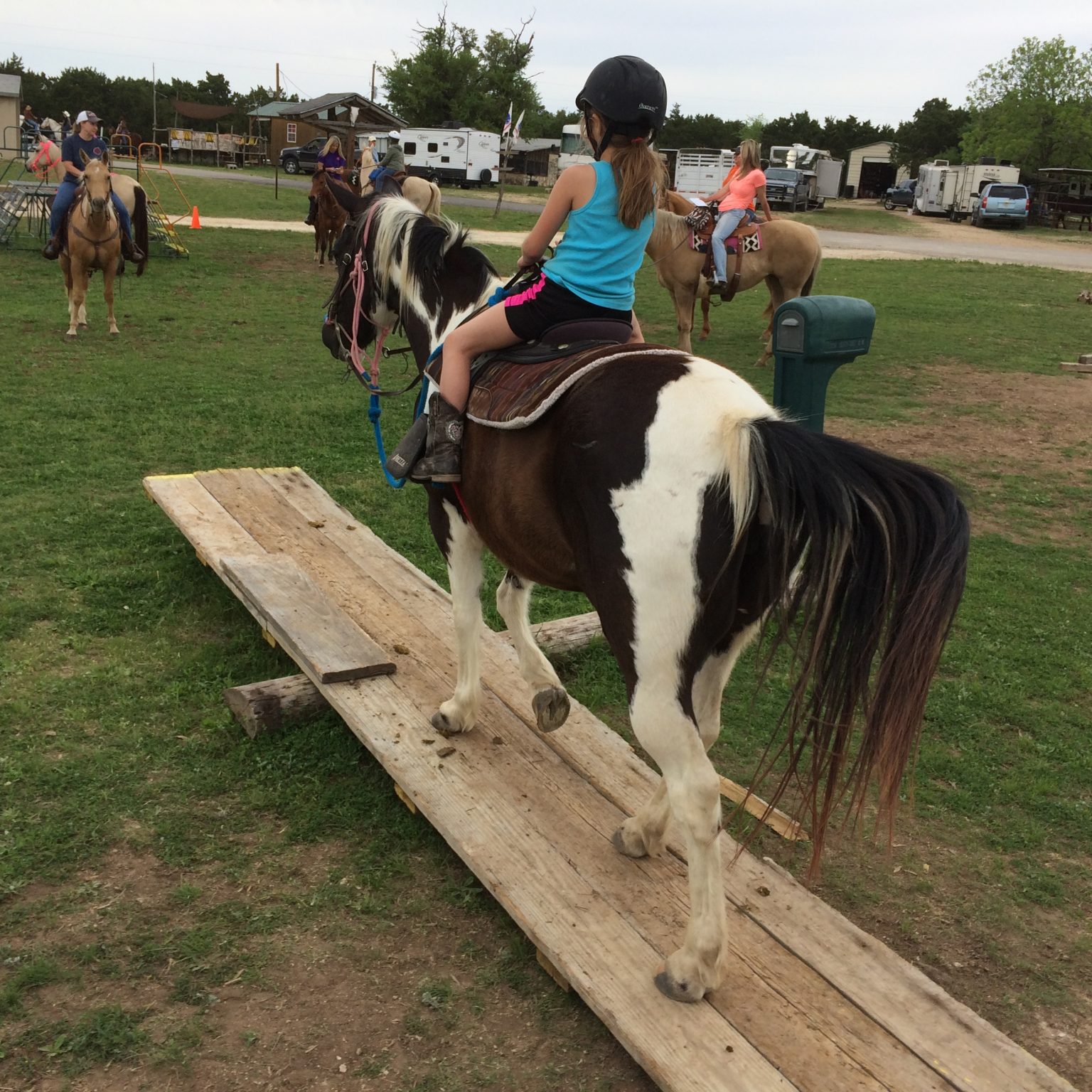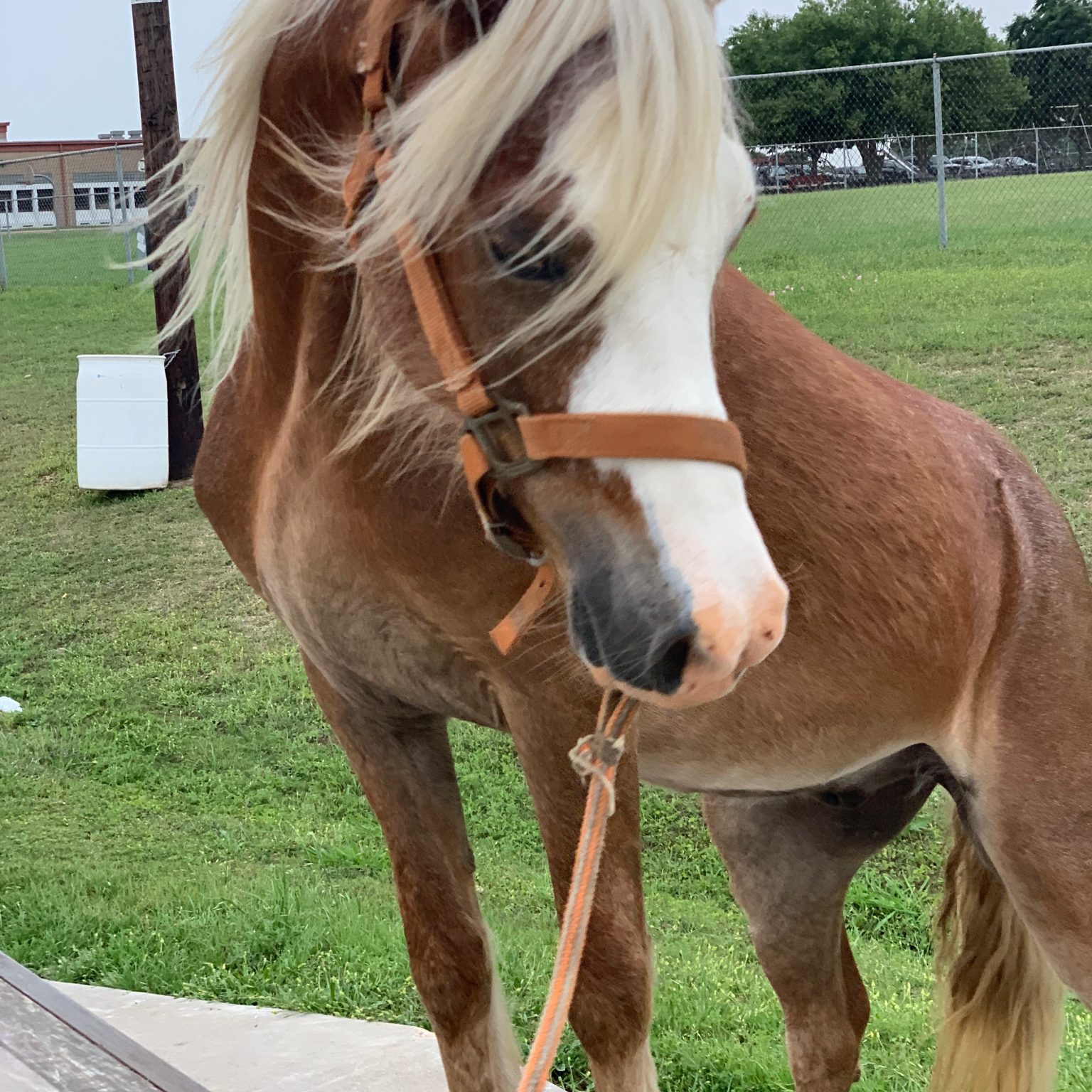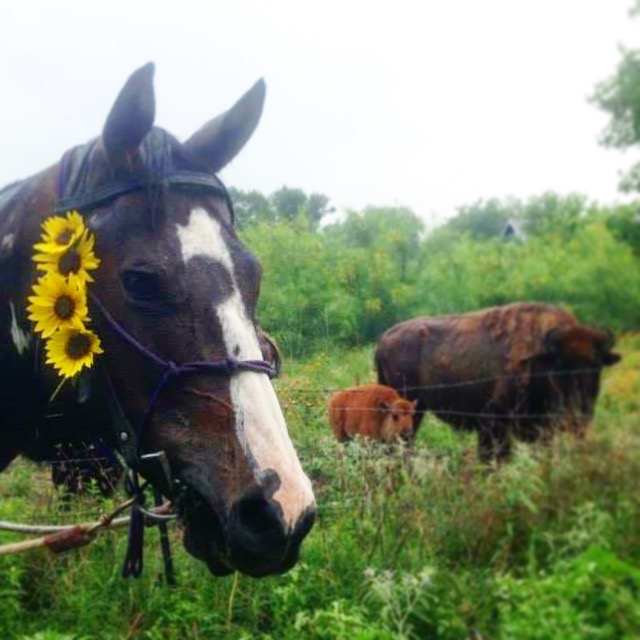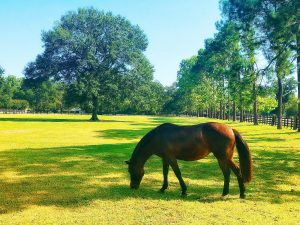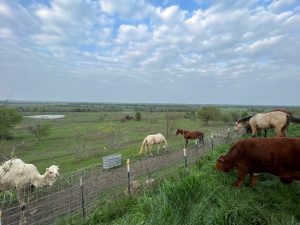This post was submitted by Makayla Peoples
Desensitization is crucial to the training of every horse. Whether you are working with kid horses or sport horses it is important to introduce them to different kinds of objects and situations. This builds the horses confidence in itself, and builds their confidence in the relationship that you have together. Basic desensitization starts with making sure that the horse is comfortable being touched by YOU anywhere on their body. Once you have spent a significant amount of time getting the horse used to your touch and contact you can move on to desensitizing them to other objects. In this article we will be exploring Habituation as a form of desensitization and the methods within Habituation.
Habituation is one of the common desensitization methods, this method is based on the idea that if you expose your horse to enough scary objects that are in the same general category that eventually the horse will see all things in that category as non-threatening. For example, if you desensitize your horse to sheep, often the non-threatening stimuli in their brain only associates it with sheep. However, if you desensitize your horse to many kinds of small animals, eventually, even if the horse is being introduced to an animal it is not familiar with, the horse should see all smaller animals as non-threatening. Furthermore, if you introduce your horse to many kinds of animals big and small, they will have a less reactive stimuli to all animals. Taking into calculation that horses are prey animals and desensitizing them to predator animals may not be as simple as habituating them other prey animals. This method relies on the trainer ‘desensitizing’ the reactive stimuli in the horses’ brain. The less reactive that stimuli is the more desensitized and safe your horse is. Of course, there is no way to expose a horse to every scary object it might ever see in its life, but using this method is a good way to be as prepared as you possibly can for any situation or scary object that might come your way. Habituation also revolves around the idea that you put your horse into increasingly testing situations stopping and praising when a positive or calm reaction comes about. It is always important to stop on a positive note so that the horse always associates the experience of desensitization with a calm and positive one.
When Habituating your horse to different objects it is best to start with very small and slow steps and you can increase the speed of the training as you observe your horses behavior, but it is always best to start slow and small. To begin habituating your horse to an object or situation, start with just a halter and lead rope with no tack on, this ensures that if something happens there is no tack getting destroyed or getting in the way. MAKE SURE that you have established a good relationship with the horse on the ground without any scary objects before you try to introduce scary objects or situations. If you do not have a solid relationship with the horse already you can cause training setbacks that will take months to fix and you can sour your relationship with the horse moving forward. So having established a good relationship with just the two of you, you can begin to introduce smaller scary objects to begin to desensitize the stimuli in your horses brain. Depending on your horses personality you may have to start very slowly with the smaller scary objects and move up to the bigger objects and situations as their confidence grows. Horses that have a particularly reactive stimuli benefit from being desensitized every day, even if it is only for a few minutes on the days you are busy. Once your horse is making significant progress and their stimuli is relatively desensitized you can start putting them in more compromising situations that test their trust in you and themselves as well as their reactivity.
The most important aspect of desensitization is that you have a good relationship with your horse to begin with. But going through all these desensitization scenarios will strengthen your relationship with your horse and it will not only boost your horses’ confidence in itself but it will boost your own confidence in your own ability to interact with these incredible animals. Whether you use habituation or another form of desensitization, always make sure that you and your horses’ safety and keeping the two of you in a healthy state of mind always comes first
If you would like to help contribute to our blog roll, please Contact Us. Learn more about riding discounts by clicking HERE.
Works Cited
https://carsonjames.com/how-to-desensitize-a-horse-to-any-scary-object/
https://onlinelibrary.wiley.com/doi/abs/10.2746/042516406778400574
https://www.horsejournals.com/desensitizing-quirky-horse
